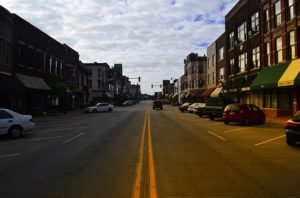Urban Distancing and the Rise of the Rest

For years, our urban areas have been attracting the young and the talented away from smaller towns, cities and suburbs, which had been leading to a seeming unabated expansion of our major urban centers into sprawling megalopolises. You could rattle off the destinations almost by rote: New York, San Francisco/Silicon Valley, Seattle, Los Angeles, plus a few more here and there. It didn’t matter that housing costs were absurd and, in many cases, up to half one’s salary would go into living quarters roughly the size of one’s college dorm. These were the epicenters, the hubs, at what may well prove to be, in retrospect, a moment in time.
We have yet to see the full after effects of the lockdowns, and while there have been reports of urban areas and states like New York and California hemorrhaging citizens, we’ve been hearing from our readers that many of them who moved out New York et al seemingly temporarily, sheltering with family or friends, gravitating back to the cities/towns/communities where they grew up, carrying on business over zoom et al, and watching the Draconian lockdowns and more lately, urban rioting, from afar, now have no intention of moving back. In fact, one investor friend who moved to a farm upstate at the onset, recently posted on the gram, showing off his new brood of calves. They were like having little kittens, he said.
OK, so in some cases, there is going to be a learning curve.
As we hear tales/speculation about the New Normal, the talking points seem fairly consistent: that masks will be required in the workplace; elevators limited to a few passengers at a time; and that social distancing will be required until further notice, or until a vaccine is available. That’s the word from the tech hubs, which also agree that no one will be taking business lunches and that eating in restaurants will become a thing of the past.
Note to self: what attracted people to the urban centers were the opportunities, the social discourse and the bars, restaurant and nightlife, much of which has now been shut down and whose rules for opening might leave them unrecognizable for years to come. So where’s the draw?
Where we’re ‘sheltering,’ all businesses have reopened and the New Normal seems to be ‘business as usual,’ with the exception of signs posted in some businesses reminding patrons that while masks are no longer required, they are strongly recommended. In the bars, restaurants and shops, you’d hardly notice that the signs are there: ‘normal’ has become the new normal. Although some people do continue to wear the masks, where once people would look askance if one wasn’t wearing one, the opposite is now happening. In the eyes of the locals, millions did not perish: the data was wrong/greatly exaggerated, as were the ‘necessary’ mandates. Now, as new sets of Draconian mandates are being put into place in urban centers, it seems that many if not most of the people who left are staying put. They’ve had enough. Especially after watching their former neighborhoods burned and businesses looted – without repercussions – while hearing tales from friends/colleagues/acquaintances who stayed behind and have been cited or fined for not wearing a mask and/or social distancing. Where’s the sense in that? Has the urban mindset evaporated in the face of small(er) town logic?
An investor friend who returned to his native Ohio for the lockdown mentioned that he’s now shifted more of his investment focus to local and more regional tech: the urban flight is no doubt creating a different set of needs to be addressed, and entrepreneurs will spot and attempt to address needs, no matter where they are. Steve Case might well have been on to something when he started investing in so-called secondary markets.
We may be at the threshold of the Rise of the Rest.
Startup L. Jackson once referred to San Francisco and its on-demand technologies as assisted living for the young. Some of those technologies have translated well for former urbanites in search of tech and tastes that may not be available locally. There’s a good litmus test for you.
As for our investor friend, he has no intention of abandoning New York completely, and many others we’ve spoken to have given up their leases (Crain’s recently reported that Empty apartments surge to record levels in parts of Manhattan. And it’s not just Manhattan), yet do plan on making trips back to their former stomping grounds for professional reasons.
Does this spell an uptick in AirBnB rentals? Or heads up, entrepreneurs: shared dwellings may well be the shared office spaces of the next iteration of tech. Get busy.
The thing about an easier, or at least a life at a more humane pace is that one notices that entrepreneurship can happen anywhere, and with everyone now on Zoom for meetings and still findable via the usual channels – LinkedIn for one – and with networking events having moved online, many people have realized that they don’t need to live in a shoebox and subscribe to what seems like somewhat arbitrary – or at least, selective – rules. So the question is: Will the centers hold?
You can push people just so far before you see pushback, aka, the law of unintended consequences. The urban exodus is on.
We remember reading somewhere one wag noting that the lockdown was leading to either a rise in home cooking skills – or alcoholism. That may be true about the people who are sitting it out in the urban centers. Makes sense, when you think about it. It’s a population at the mercy of Draconian mandates that, from an urban-distancing perspective, seem little more than half-baked. Onward and forward.